When I first heard about overcast stitch. I thought it wasn’t the same as an overlock stitch. But once I look closer, I get the difference. So basically, Overcast stitch stitches
Sew the seams separately and finish the edges. However, the Overlock Sew seam allowance and finish edge are similar.
So, how does the overcast stitch work? So basically,
machine overcast stitch
Select the overcast stitch on your sewing machine, align the fabric edge with the presser foot guide, and sew along the edge to prevent fraying.
Let’s get into how and when to use it — and why your seams will thank you later for securing your sewing project with the right sewing technique.

Table of Contents
What Is Overcast Stitch On A Sewing Machine?
An overcast stitch on a sewing machine wraps the thread over the edge. It creates a clean and secure finish. It’s like a mini fence holding your threads in place.
It’s often used when you don’t have a serger but still want that neat, durable seam edge. That’s why you need a special machine like a chain stitch embroidery machine.

Can A Sewing Machine Do An Overlock Stitch?
A regular sewing machine can’t do a true overlock stitch like a serger because it doesn’t have a blade to trim the fabric or multiple loopers for multi-thread stitching.
BUT!
Many sewing machines use an overcast stitch foot to mimic an overlock look. It finishes the edge nicely, just without trimming.
So yep, it’s a close second. But if you want that clean, factory finish with trimmed edges, a serger (overlock machine) is the real deal.
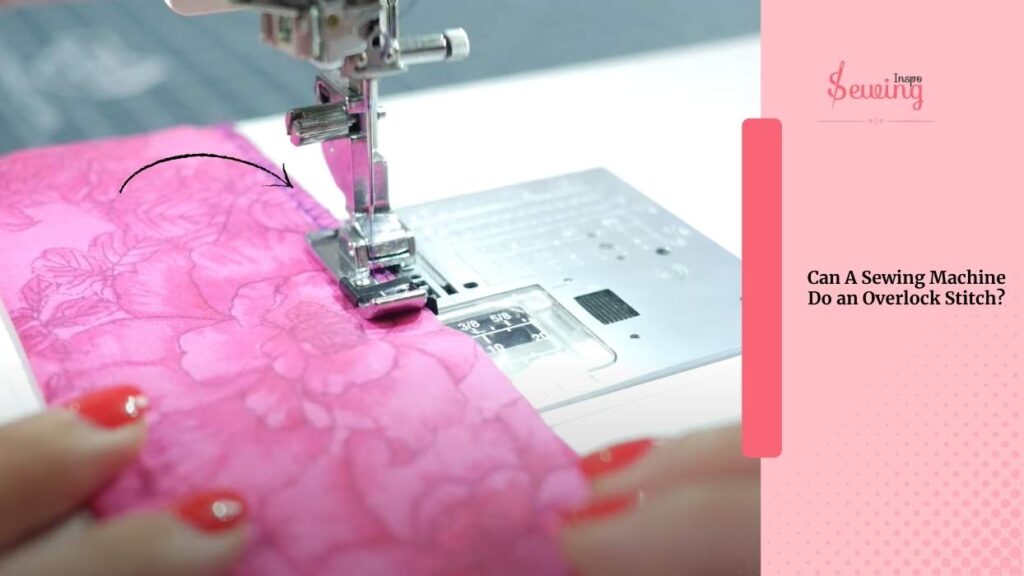
Best Sewing Machine Overcast Stitch
Now you must think about which sewing machine suits the overcast, right? No worries I won’t leave you wondering. There are a few machines that I like,
- Brother CS7000X
- Singer 4423 Heavy Duty
- Janome Magnolia 7330
- Bernette B38

Overcast Stitch Symbol
The overcast stitch symbol on a sewing machine usually looks like a zigzag line with a straight edge, or a comb-like stitch — one side straight, the other side looping over the edge. That’s your overcasting stitch. But,
It may look like this on your machine:
➡️ ┐┐┐ or |-|-|-| or a zigzag next to a straight line
But yes, theovercast stitch varies.
Each brand has slight variations, so check your machine’s manual. Depending on the model, it’s often labeled as stitch number 06, 08, or 10. This will also help you do a machine whip stitch.
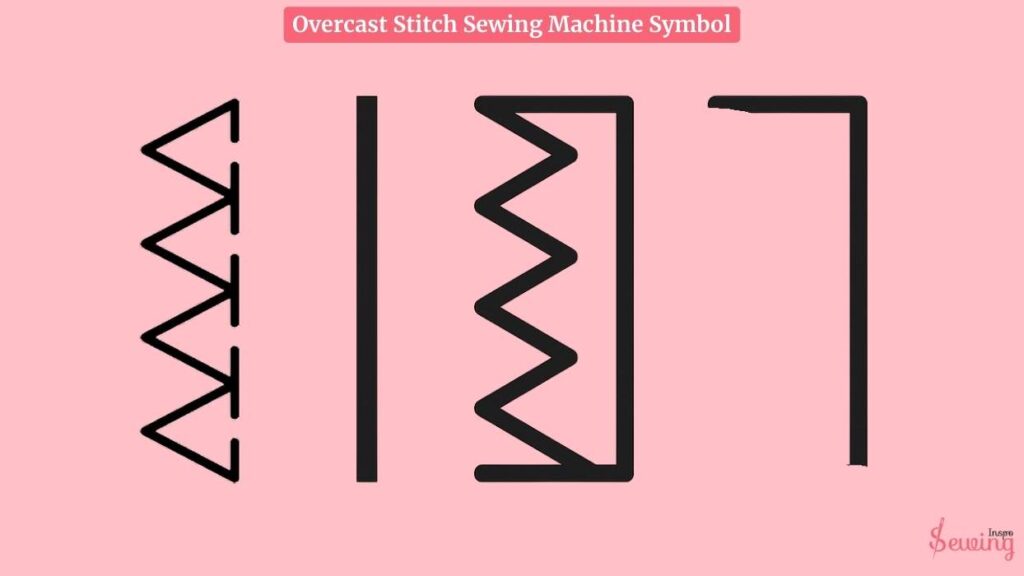
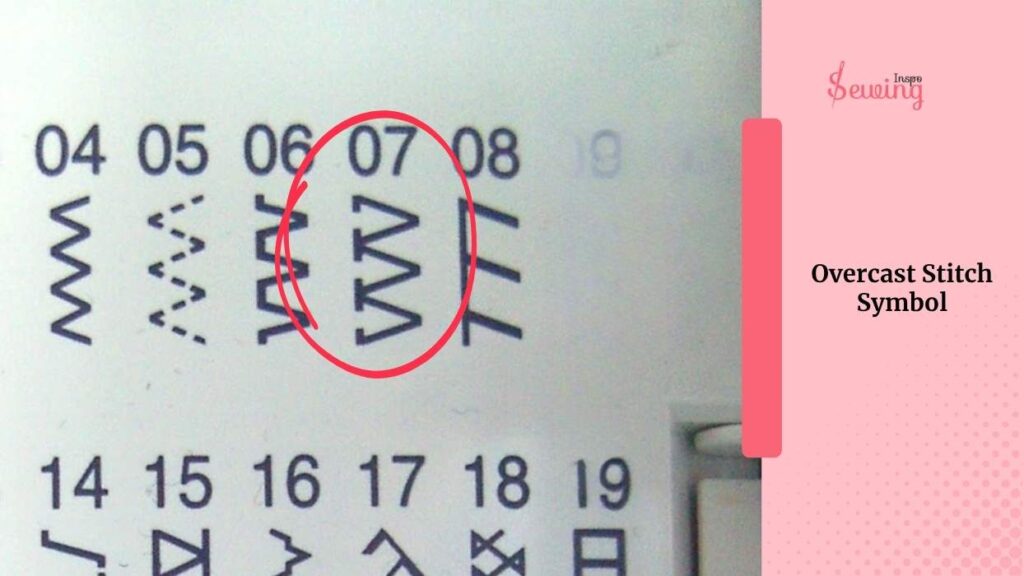
Singer Overcast Stitch Symbol
One of my readers asked me what the singer overcast stitch symbol is. Cause she seems not to find it while doing overcast stitch on the sewing machine. I answered her but i thought of adding it here too. So,
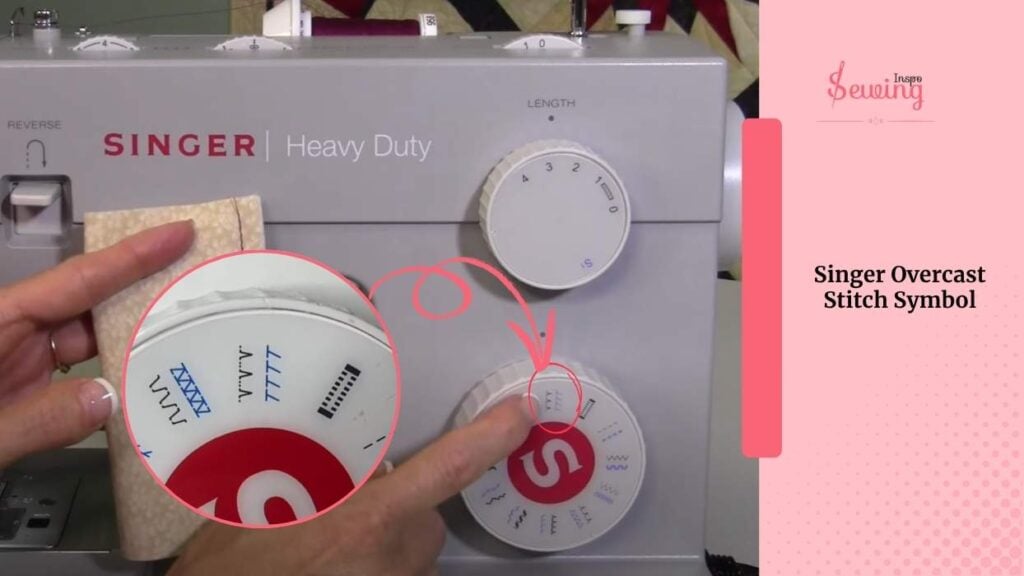
The symbol for the overcast stitch on Singer sewing machines can vary. It typically resembles a zigzag pattern combined with a straight stitch on one side, or a pattern of stitches that wrap around the edge of the fabric.
How To Do An Overcast Stitch On A Sewing Machine?
Follow the steps below to do an overcast stitch on a sewing machine.

Prepping My Fabric for Overcast Stitch
Before I even sit at the machine, I make sure the fabric is ready to go. I’m working on an unfinished raw edge and aim to prevent it from fraying during and after sewing.
Here’s what I do:
- Lay the fabric right side down, with the raw edge facing me. This helps me do stitch around seam finishing.
- I don’t fold or hem the edge. This stitch works best on flat raw fabric edges.
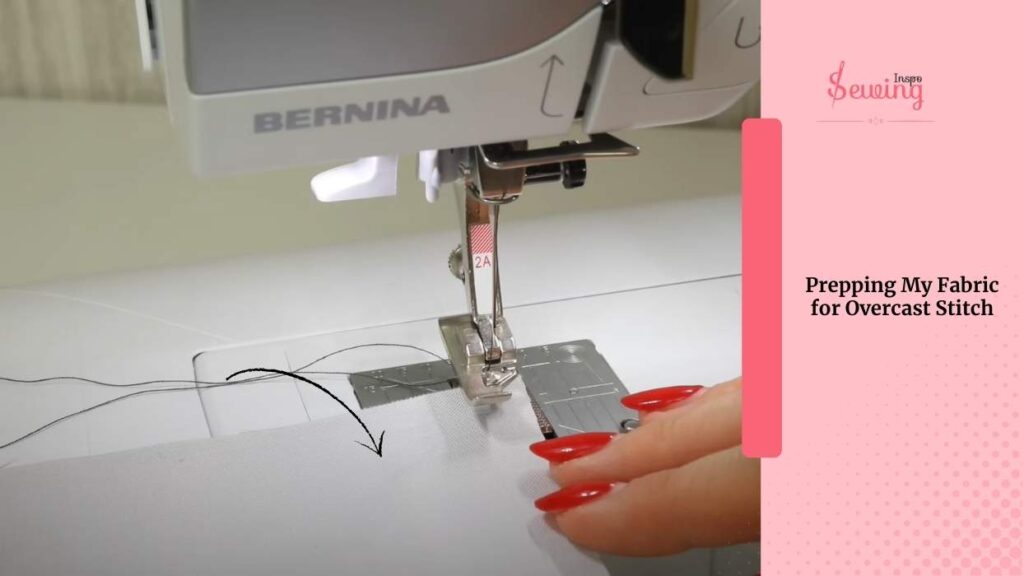
If the fabric is super fray-prone (like linen or loose-weave cotton), I quickly press with an iron. A nice, flat edge is easier to guide. It’s not complicated like chain stitch, but still, you have to hold the fabric right.
Select the Stitch on the Machine
I look at my machine’s stitch chart and find a stitch that’s made to wrap the edge of fabric. It’s usually called:
- Overcast stitch
- Overedge stitch
- Or sometimes a stretch overlock stitch
If your machine doesn’t have a special overcast stitch, no worries. Go for the zigzag stitch instead.

For zigzag, I use:
- Stitch Width: 3 mm
- Length: 1.5 mm
This gives me a tight, close wrap on the edge without bulk.

Attaching the Overcast Foot
Now it’s time to switch my presser foot. I grab my overcast foot (Foot 2A on most machines). This one has a tiny metal bar in the middle.
It stops the fabric from curling, keeping the stitch nice and even along the edge.
If I don’t have the foot?
I can still do it with the regular zigzag foot, but I’ll go slower and keep a steady hand to avoid curling or jumping stitches.
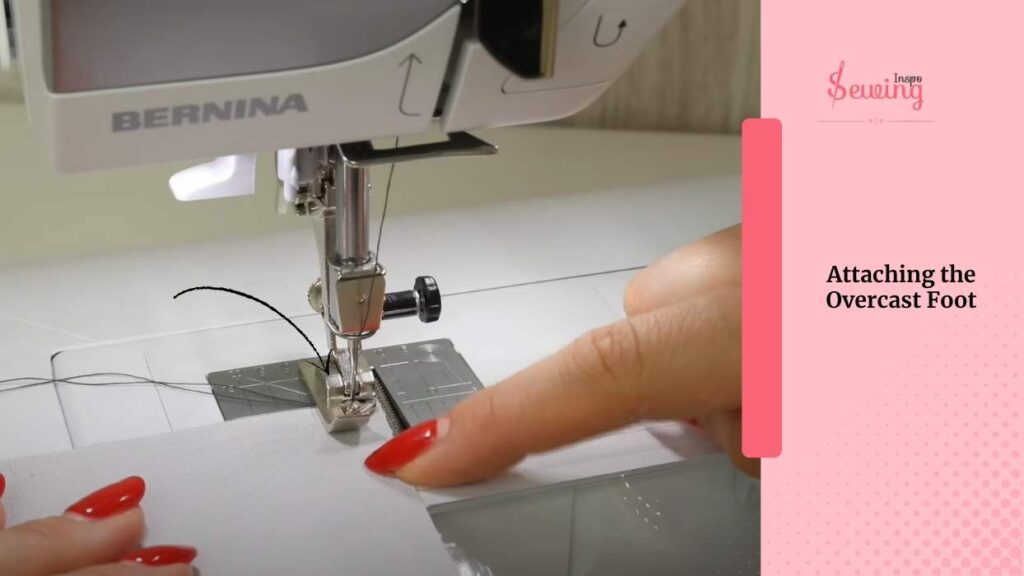
Aligning the Fabric With the Foot
Now I sit down, lower the presser foot, and align my fabric. The raw edge of the fabric goes right next to the metal bar inside the foot. But not like gathering stitches.
I line it up so the needle will swing left into the fabric and right just past the edge — like it’s wrapping the thread over the edge. I double-check that the fabric edge is not under the bar — just against it. That’s key!

Insert The Needle Into The Fabric To Anchor It
I insert the needle into the fabric to anchor it, hold the thread tails gently with my left hand, and then hit the foot pedal slowly and steadily.
The needle swings left into the fabric, then right over the edge. I keep feeding the fabric evenly to stay in contact with the bar.

I don’t yank or push the fabric. I let the machine do the work, and I just guide gently. I even do this while doing honeycomb stitch.
For smooth stitching,
I sew at a slow to medium speed. If I go too fast, I risk curling the edges or misaligning the stitch.
Watch the Tension and Edge Curling
As I sew, I always watch how the fabric reacts, especially stretchy knits or soft cotton. If the settings aren’t just right, these can curl or pucker.
I keep an eye on my thread tension first. If I notice the stitch is pulling the fabric too tightly. If it makes the pucker or bunch up, I stop and adjust the tension dial slightly lower.
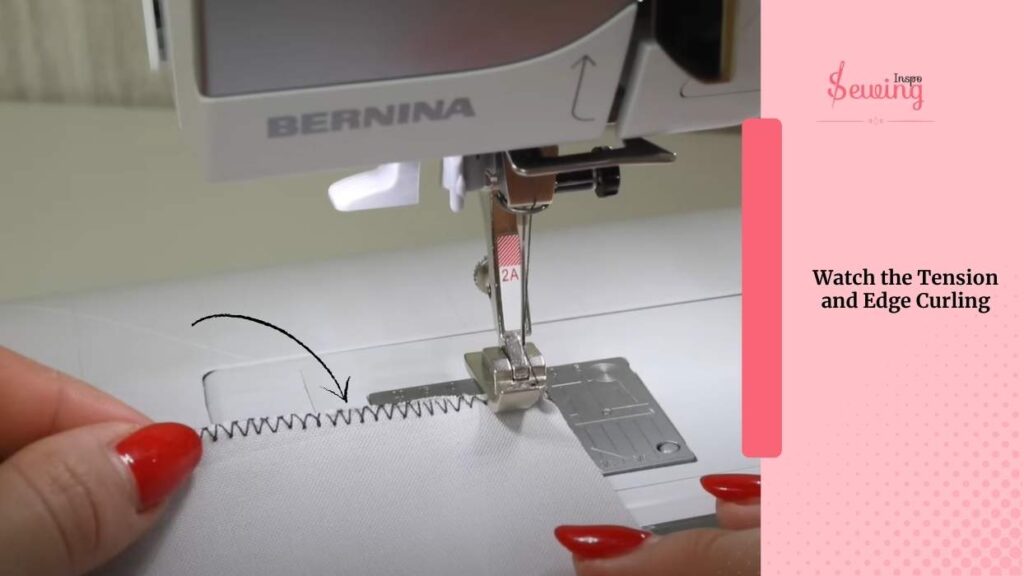
If the thread looks too loose and loopy on the underside,
I’ll increase the tension slightly. Sometimes, even a 0.5 change makes a big difference. Every fabric reacts differently, so I treat tension like seasoning: adjust as I go. If it doesn’t work for you, then experiment between 0 and 9.

When the fabric edge starts curling up, I pause and realign it. My overcast foot helps keep it flat, but if it still misbehaves, I quickly press it with an iron before continuing.
I also make sure the stitch is balanced.
It should hug the edge neatly, not float off or pull in. Once the tension and stitch placement feel right, the result is a clean, strong finish with no fraying and no fuss.
Finishing the Overcast Stitch With Backstitch or Tie Off
When I reach the end of the fabric edge, I sometimes do a short backstitch to secure it. For delicate fabrics, I prefer to tie off the thread tails by hand so I don’t stretch or chew up the edge.

That’s how to overcast stitch on sewing machine.
Is A Sewing Machine With Overcast Stitch Hard?
No, a sewing machine with an overcast stitch is not hard to use.
Most modern machines have built-in overcast stitches and often come with a special overcasting foot, which guides the fabric and prevents fraying. You simply select the stitch, attach the foot if needed, and sew along the edge.
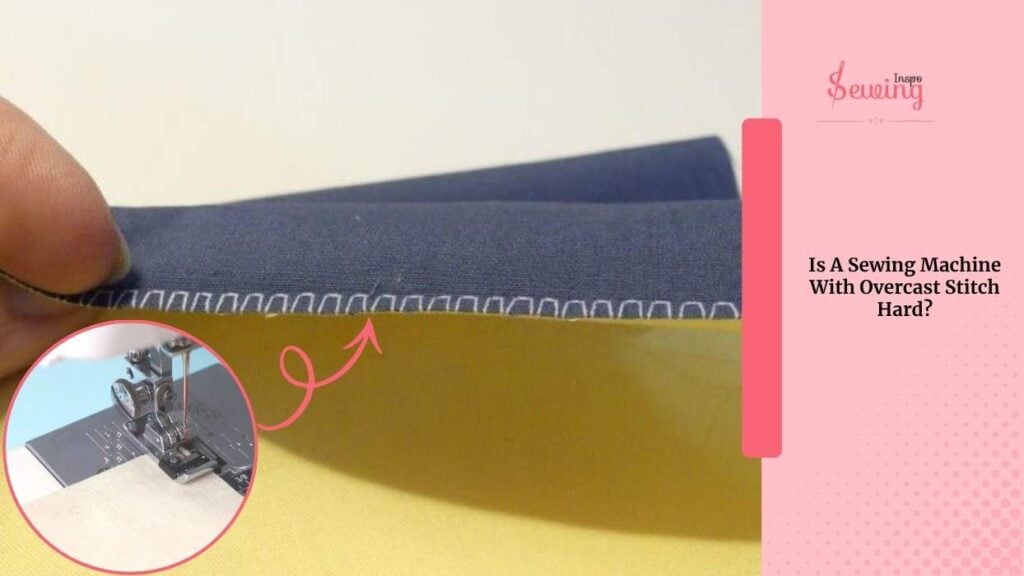
Frequently Asked Questions
Can I do an overcast stitch without a special presser foot?
Yes, you can! While an overcast foot helps guide the fabric and prevent curling, you can still use a regular zigzag foot. Just go slow and keep your fabric steady.
Is overcast stitch the same as overlock?
Not exactly. An overlock stitch is done on a serger and also trims the edge as it stitches. An overcast stitch just wraps the edge but doesn’t cut it.
Which fabrics work best with an overcast stitch?
Almost all! Overcast stitching works well on cotton, linen, knits, canvas, and even delicate fabrics. You might just need to adjust stitch length and tension based on fabric type.
Outro
The sewing machine overcast stitch may be simple. But it’s best for clean, fray-free edges — no serger needed. It’s quick, tidy, and makes your sewing look effortlessly professional. Once you try it, you’ll wonder how you ever skipped it.

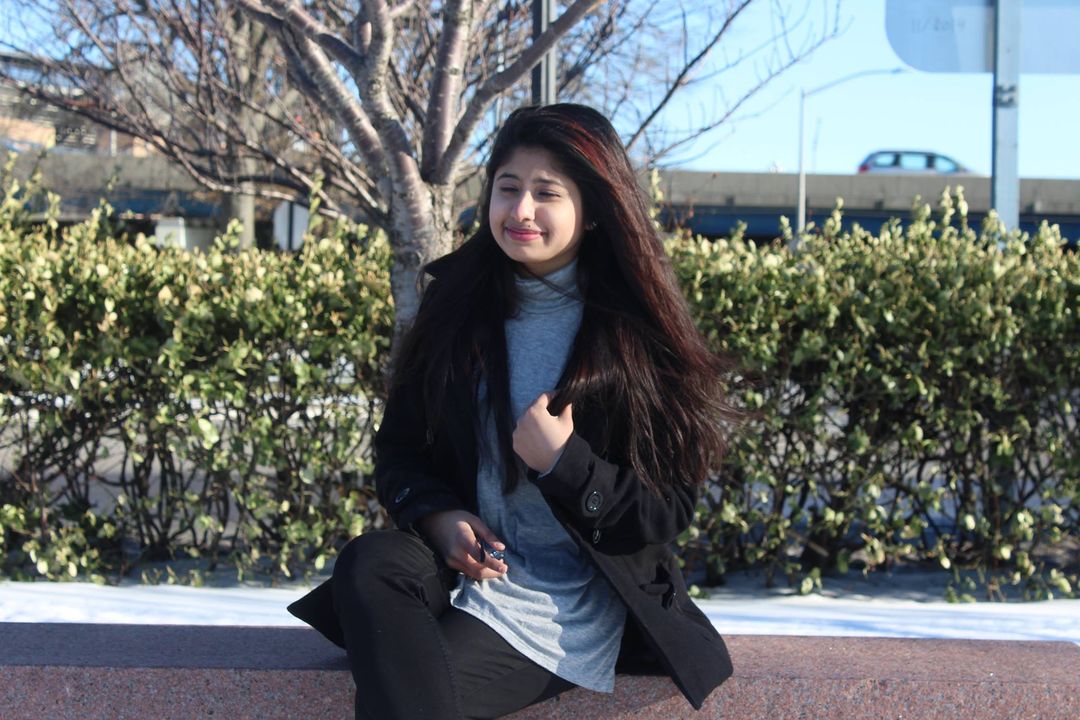
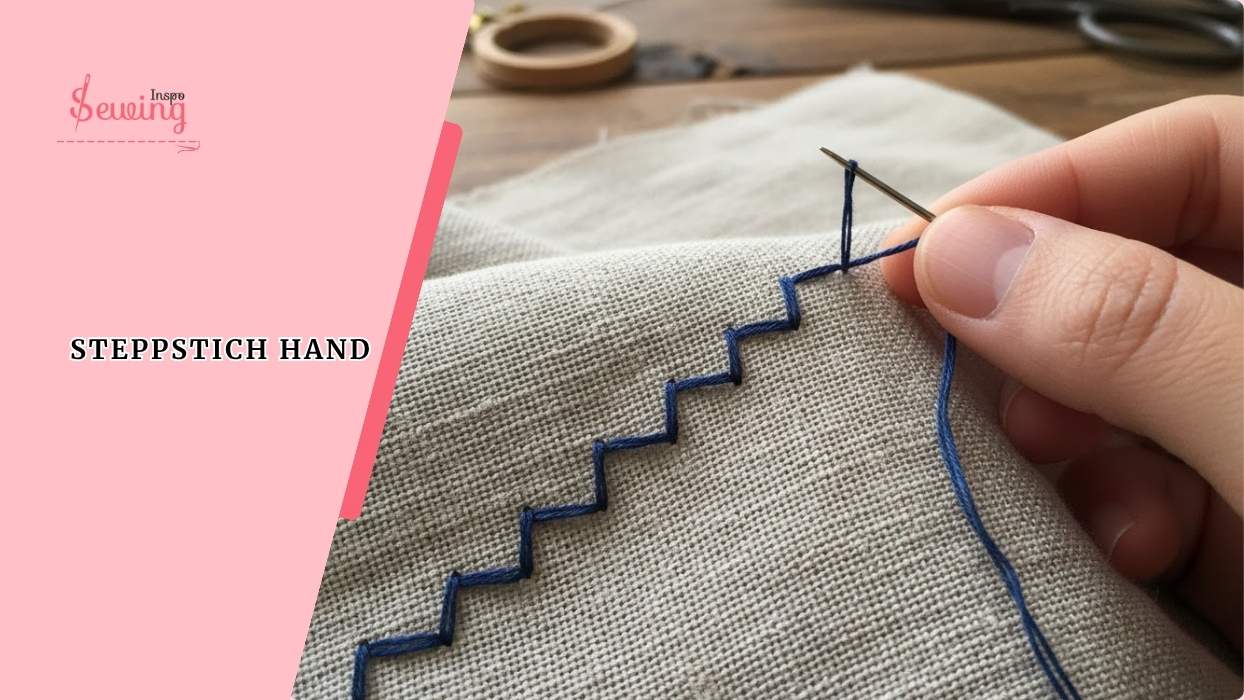
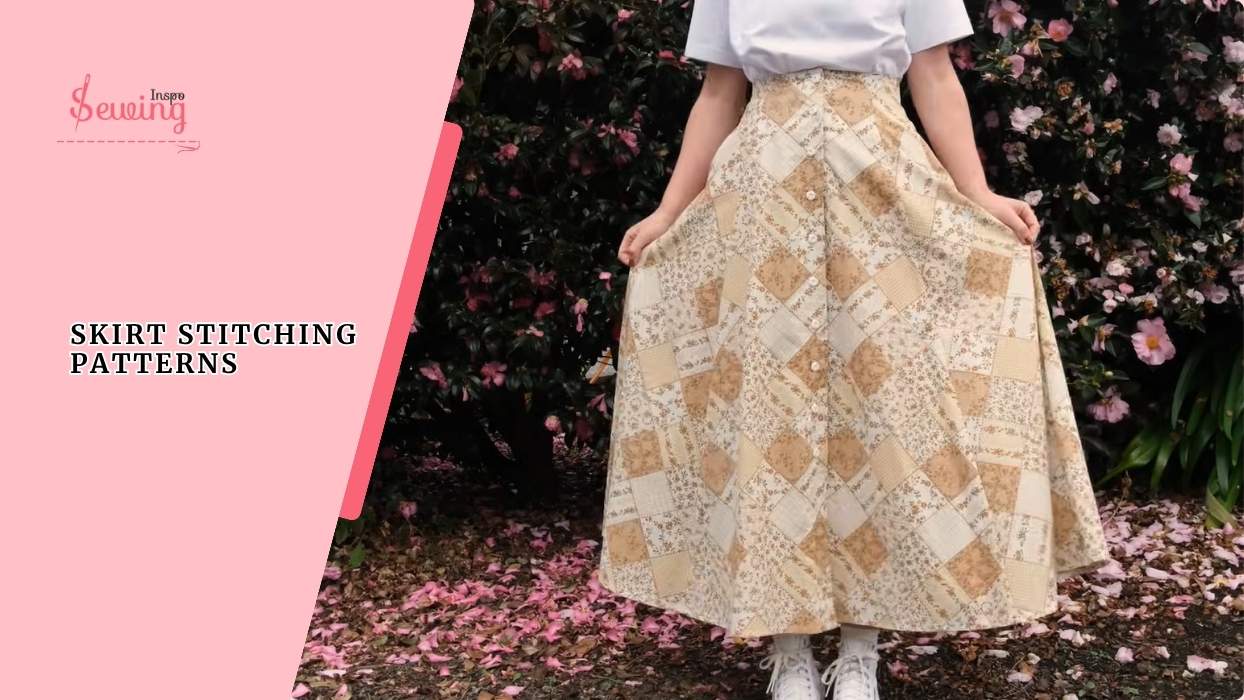
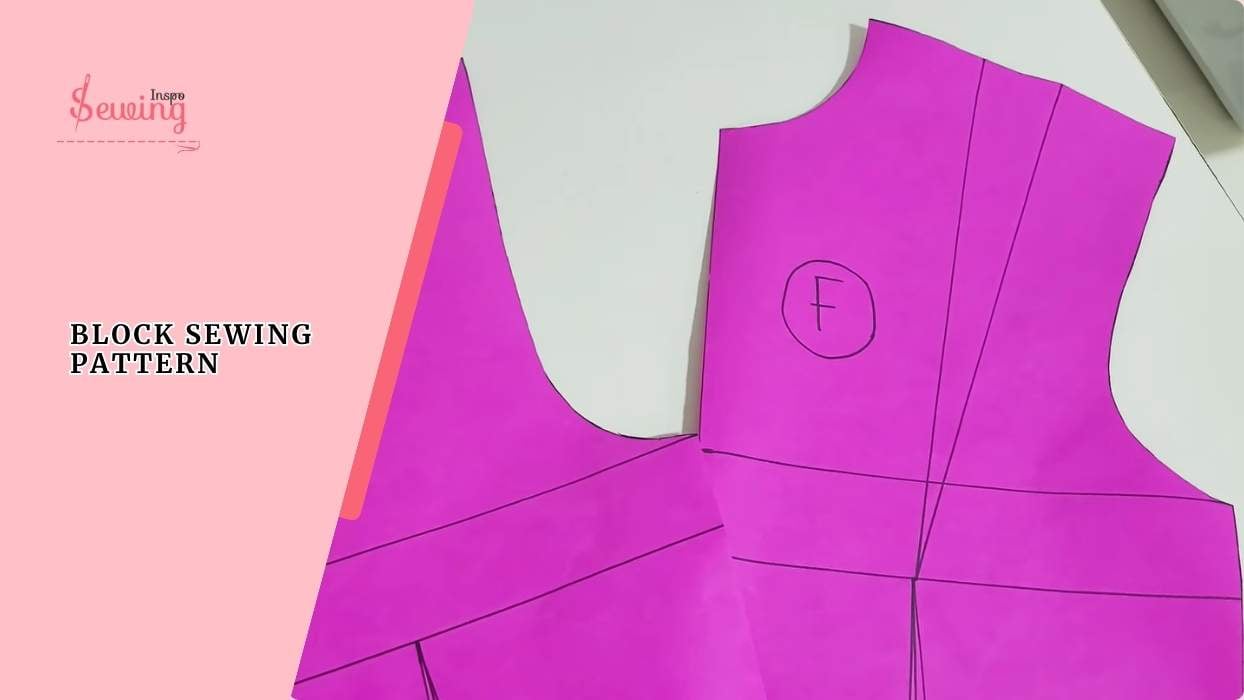
Leave a Reply